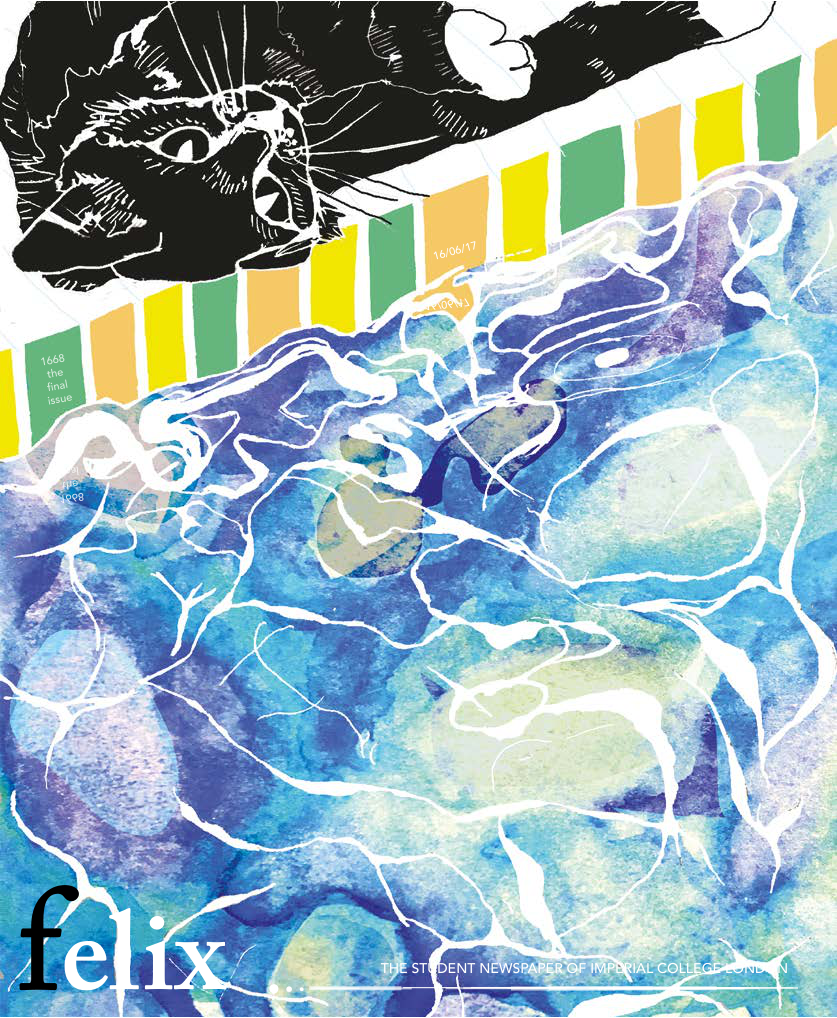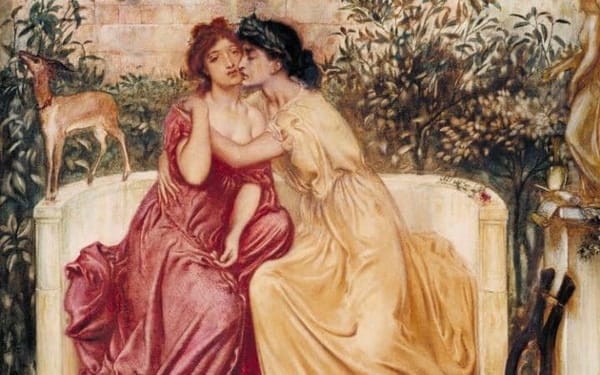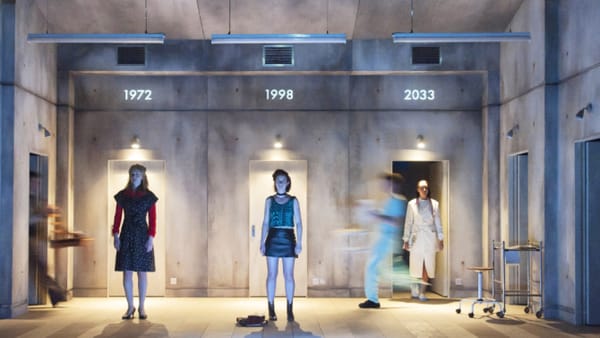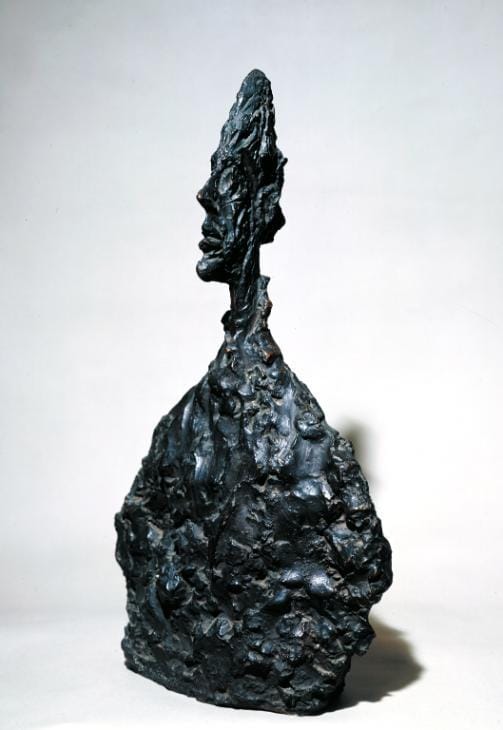The Summer Exhibition at the Royal Academy
The RA launches a surprisingly emotive edition of its trademark summer show

There aren’t many galleries in which you might expect to see a multimillion pound creation by a Turner prize winning artist exhibited on equal footing with an oil by Joe Bloggs from Surrey, but that is exactly what the Royal Academy’s Summer Exhibition offers. Each year, tens of thousands of works are submitted to the Summer Exhibition, not only from established artists but also from amateurs and students. These are then whittled down to the 1100 works ultimately displayed on the walls of the Royal Academy by the Hanging Committee, this year headed by Eileen Cooper.
Cooper has made it her mission to widen the scope of the Exhibition by making an effort to showcase the work of artists from a diverse range of backgrounds in education, race and nationality. This is a necessary and admirable goal, but her ideals were a little undermined by her tour of the works to the press. She moved from one piece to the next, detailing her connection to the respective artists; one, we learnt was a student, the other a mentor, the next, a dear friend from her days at Central St Martin’s – so much for meritocracy.
Regrettable though it is, that the Exhibition for all its dreams of openness should fall prey to the entrenched ethos of the ‘old boys’ network’ is somewhat to be expected. Royal Academicians, the artists elected as members of the Royal Academy, including Tracey Emin and Norman Ackroyd, expect to be exhibited at the institution’s headline show. We may as exhibition-goers be missing out on the work of some promising unknown artists, but everything has its benefits. The Summer Exhibitions can often be a good way to ‘catch up’ with the big names without committing to a solo exhibition of their work.
Cooper claims that the Exhibition is more open and diverse than ever but moves from one piece to the next, detailing her connection to the respective artists; one, we learnt was a student, the other a mentor, the next, a dear friend from her days at Central St Martin’s - so much for meritocracy
These are rarely radical new directions of work, but solid examples in the vein of an artist’s greatest hits. Emin’s pieces this year are a series of handwritten phrases constructed in neon lettering. “And I said I love you!” proclaims one; confession or rebuke? We’re never quite sure; the ambiguity is part of the charm, making the private and personal public has always been at the centre of Emin’s work. In another room, Michael Craig-Martin’s flat, vibrant illustrations of household objects return – a tennis racquet rendered in jewel tones, in another instance a violin; each a cheery, two-dimensional equivalent of Duchamp’s ready-mades – precise and bright. There is some indication of evolution in Craig-Martin’s work; In Untitled (Yellow Laptop Fragment) Craig-Martin seems to be moving further into abstraction, by zooming into a corner of the object he renders the parallel lines of the casing and screen Mondrian-esque.
Kapoor’s offering is quietly menacing; a mass that grows coral-like from the walls – congealed pink, red, and cream paint is built up to resemble an explosion of gristle; bloody muscle, and tendon. Thick paint takes on a soothing role elsewhere in Olwyn Bowey’s acrylic paintings of potting sheds and still life scenes. These are richly verdant canvases with heavily textured spikes of grass and dappled light.
Two thrones, both searing updates of the Iron Throne, assembled by Gonçalo Mabunda in an Afro-tribal style from flattened bullets and grenades and other weapons of war hold court.
Different coordinators take responsibility for the curation of different spaces. One of the stand out rooms belongs to Yinka Shonibare. His walls are painted in sumptuous burnt orange; the colour of the best kind of tomato soup, the colour of slow burning embers. Against this striking backdrop Shonibare has hung some of the most vibrant, memorable works of the exhibition. His own Venus de’Medici stands in a corner, a traditional Venus cast covered in yellow and red African textile, her head a painted geographical globe. More than any other room Shonibare’s is international, with a focus on portraits, one filled with humanity. There are some fantastic large works; a canvas of the Henna Bikers by Hassan Hajjaj dominates on one side, in the centre, two thrones assembled by Gonçalo Mabunda in an Afro-tribal style from flattened bullets and grenades and other weapons of war hold court. This is a searing real-life update of the Iron Throne, the blood-soaked sectarianism and battle for power in impoverished areas of the continent made tangible. Less imposing in size but no less bold in artistry are Taigen, Monika, Larry, Dasha, Rosie, and Kadeem and Kyrone, denizens of London’s East End recreated in wonderfully intricate painted wooden sculptures by Tomoaki Suzuki. These pocket-sized likenesses are brimming with energy and life, mixing modernity of character with the deeply traditional craft.
works are crammed in Tetris-style, frame upon frame, sometimes five or six works high
There’s always a lot to take in at the Summer Exhibition, works are crammed in Tetris-style, frame upon frame, sometimes five or six works high; smaller works tend to get a little lost. The print room can often be a source of hidden treasures; Ackroyd’s unassuming monochrome prints of cliffs and seascapes are always a delight, a delicate oil of a Pale Green Hydrangea by Melanie Miller is tucked away in a corner – it’s worth seeking it out for its meticulous brushwork and use of muted tones in the tradition of the Old Masters. Worth seeing too is the architecture room in which a host of construction diagrams toe the line between technical illustrations and works of geometric art.
The undisputed highlight of the show is the video installation WESTERN UNION: Small Boats by Turner nominated Issac Julien, who is this year’s Wollaston Award winner. A haunting narrative of wealth, decline, and migration plays out over five screens; a big white house stands by the Sicilian coast, amongst the rocks around it, well to do families sun themselves amongst the rocks surrounding it, some lean, tanned men dive gracefully into the impossibly blue waters. We see a close up of some sandy toes, as the camera pans away we see they belong not to a sunbather, but a body covered in metallic foil, one figure in a row of many. Scenes of decadence are interrupted by ones of tragedy; men, sapped of all their energy are cast adrift on small boats, others drown in the waters that only moments ago looked so peaceful. Julien completed this work in 2007 but it has never before been exhibited. A decade on, the images of stark inequality are more relevant than ever. The opulent interiors of the Royal Academy lend an extra dimension to the work, immersing us further in the world that Julien has constructed.
The Summer Exhibition is often like a good summer blockbuster, frequently action packed, high on sugary froth but light on emotional resonance. Julien and Mabunda’s work shows that this art world summer fixture can be much more.
4 stars. Summer Exhibition 2017 is on at the Royal Academy of Arts until 20th August Tickets £15.50 (without donation £14). Concessions available.









